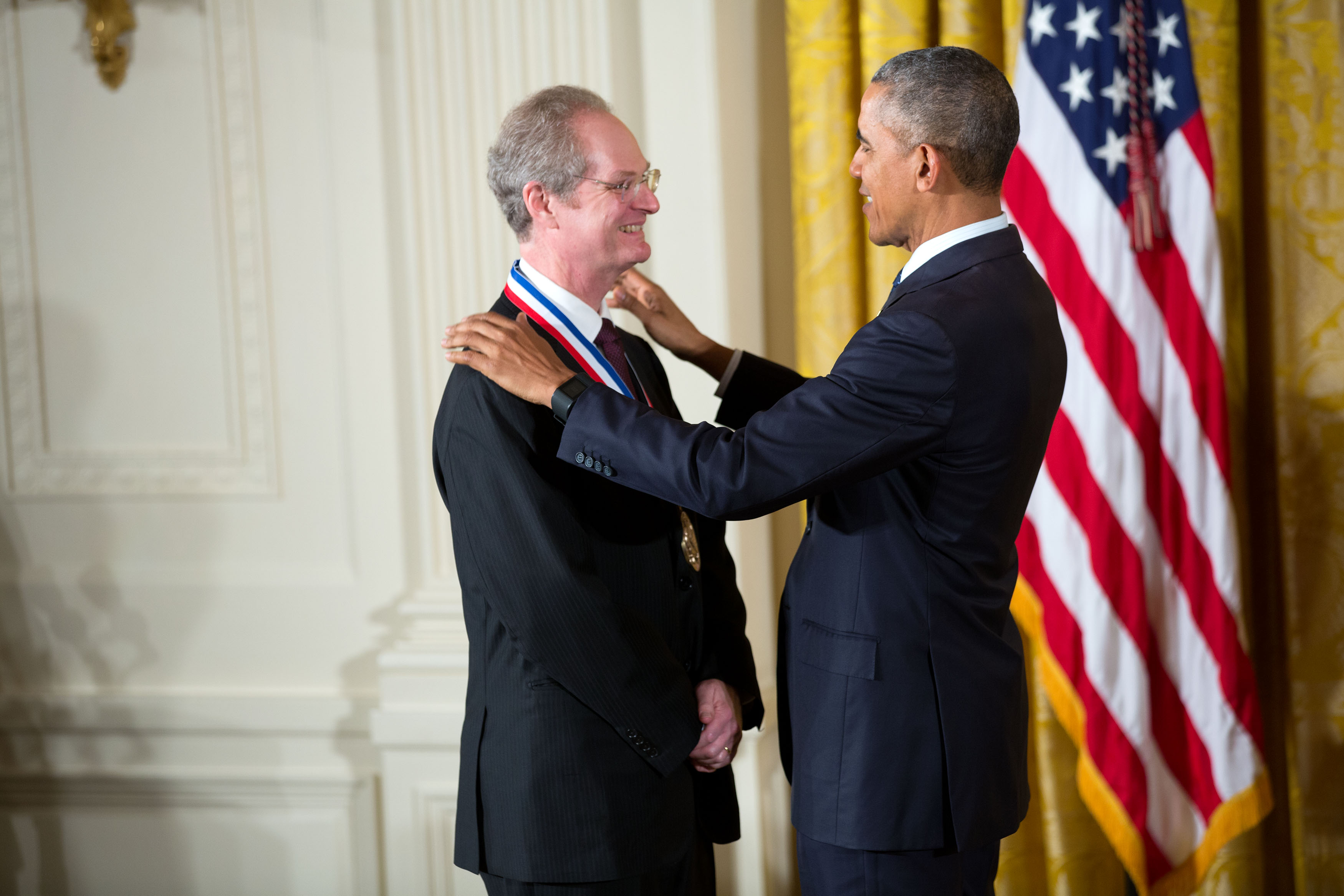Last March, Berkeley welcomed Paul Alivisatos as its new vice chancellor for research. A pioneer in applying nanocrystals to biological imaging and renewable energy, Alivisatos previously directed the Lawrence Berkeley National Laboratory for seven years and has been a chemistry professor at Cal since 1988. He also helped found three companies. In May, he received the National Medal of Science from President Obama (pictured here). As Alivisatos fosters a dynamic campus environment driven by curiosity and the desire to do good, he reflects on his own journey to bridge the gap between the lab and marketplace.

Paul Alivisatos and President Barak Obama
Since I was a graduate student at Berkeley in the early 1980s, I have always wanted the fundamental research I was part of to have a practical use. This follows from the broader ethos of Berkeley, where scholarship is brought to bear on changing the world, and has guided me over the years. It led me to a postdoctoral position at Bell Labs and to work on tiny crystals before the subject was formally recognized. At that time, while my Berkeley colleagues were debating the relative merits of basic versus applied research, I sensed that the Bell Labs community had a more nuanced concept in which these two approaches could be integrated seamlessly. It has always been my personal goal to work this way.
I have been involved in creating three companies, each one a wonderful adventure that resulted from our team’s very foundational research in nanomaterials. Quantum Dot Corp., now part of a large biotech company, invented products that are widely used today in medical imaging. I was involved with Solexant, a solar energy effort, during its start-up phase, but it struggled to gain traction. Nanosys, Inc. has been the most fun of all, as the materials we developed continue to impact diverse areas, especially commercially available wide color gamut energy efficient displays. I am writing this perspective on a beautiful Quantum Dot display.
My engagement with the world of entrepreneurship did not just follow research in the lab. In fact, it greatly enriched my academic work. Once a company begins developing a technology that was first demonstrated at a university, the focus narrows, and the pace quickens remarkably. In all three cases, it didn’t take long for me to see that these companies surpassed anything a university lab — even my own — could do. That has thrust me into periods of introspection to consider how to adapt to a changing reality. This can be hard: It may mean changing directions, or even walking away from potential publications that are possible in the academic world but no longer at the cutting edge of technology. In the end, my experiences with industry have prompted me to move toward new research questions that are best suited to an academic group, while also providing invaluable context for the possibilities of my work.
I believe a deep commitment to patient scholarship and careful foundational work is essential. Still, entrepreneurship has been indispensable to my intellectual renewal and to pushing me toward new directions. I haven’t stopped looking for another foray into entrepreneurship. Next time, if I am careful, I can go even further in realizing my career-long dream to participate in a full journey in which my foundational academic research makes an important positive difference in this world.



